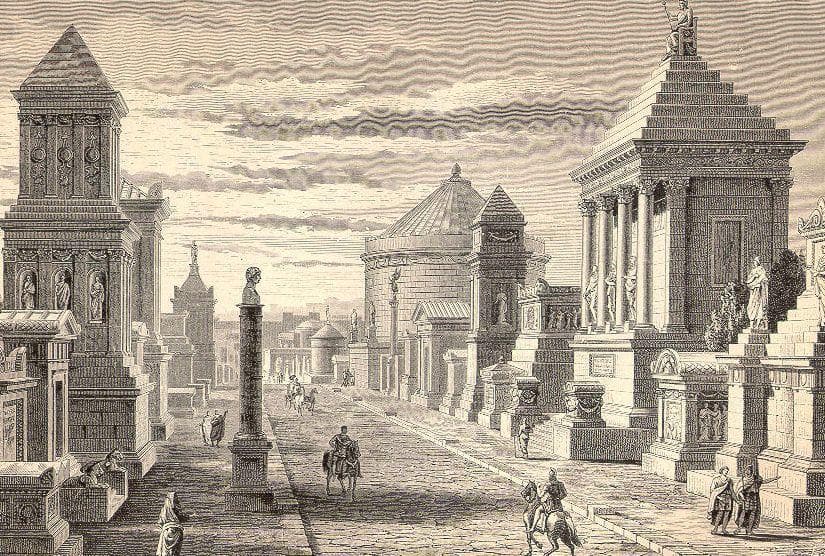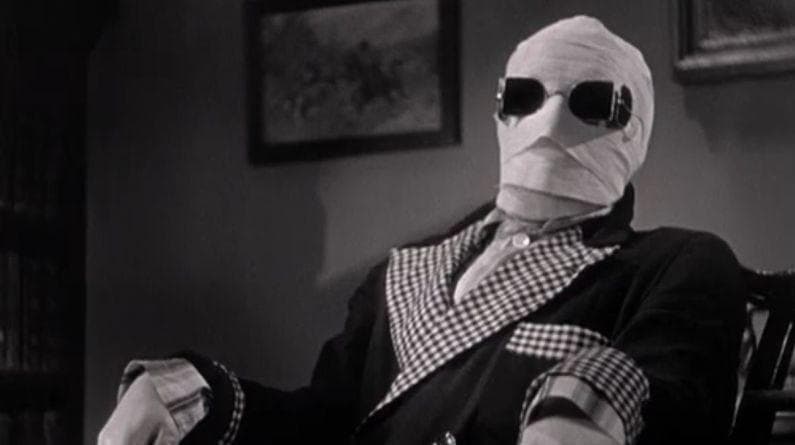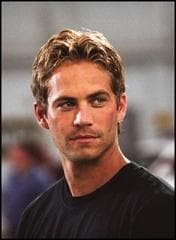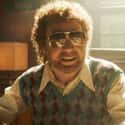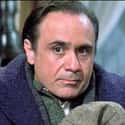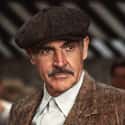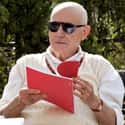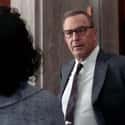-
(#2) Ray Foster In 'Bohemian Rhapsody'
Record executives in musical biopics seldom come off looking great. Since the audience already knows the musician in question is going to become an international superstar, anyone who doubts them is going to look like an idiot. So the scene in Bohemian Rhapsody when Ray Foster (Mike Myers) tells Freddie Mercury and his Queen bandmates that "Bohemian Rhapsody" is never going to be a hit is already questionable. The scene becomes outright ridiculous when you realize that not only did "Ray Foster" never exist, but the executive he was based on, Roy Featherstone, was a big Queen believer from the beginning.
Like many movies "based on" true events, Bohemian Rhapsody tried to inject more conflict into the story than there really was in real life. What salvages the moment is the casting choice. Mike Myers is famously a huge Queen fan in real life, and he used "Bohemian Rhapsody" to kick off his 1992 comedy Wayne's World. Casting a real-life Queen superfan to tell Freddie Mercury that "Bohemian Rhapsody" is terrible suggests the filmmakers were fully aware of the irony.
-
(#12) Bobby Ciaro In 'Hoffa'
Danny DeVito's 1992 biopic, Hoffa, explores the life of infamous labor leader Jimmy Hoffa, but the story is told itself primarily through the eyes of Bobby Ciaro, Hoffa's doggedly loyal lieutenant. Ciaro first meets Hoffa while working as a truck driver in 1935, and Hoffa convinces him to join the Teamsters union. Ciaro eventually becomes Hoffa's right-hand man, participating in Hoffa's legal and less-than-legal activities. In 1975, everything comes to an end when Hoffa and Ciaro are both whacked.
The real Jimmy Hoffa didn't rely on just one loyal sidekick. Like many of the other characters on this list, Bobby Ciaro is a composite based mainly on two people: Hoffa's adopted son Chuckie O'Brien (who was also the inspiration for Tom Hagen in The Godfather), and president of the Local 299 union Bobby Holmes. Unlike Bobby Ciaro, the real Chuckie O'Brien was much less loyal to Hoffa. In the months before Hoffa's infamous 1975 disappearance, the two had a falling out when Hoffa failed to back O'Brien's bid for an administrative job in Local 299, and O'Brien retaliated by spreading rumors that Hoffa was an FBI informant. O'Brien also wasn't taken out with Hoffa. In reality, he was suspected of being involved in the slaying.
-
(#5) Jimmy Malone In 'The Untouchables'
For a movie that features an epic clash between two iconic figures in the history of American crime - Eliot Ness (Kevin Costner) and Al Capone (Robert De Niro) - it's a Chicago cop who steals the movie. Without Jimmy Malone (Sean Connery) pushing him to do what's necessary (even if it's outside the law), Eliot Ness would have never had the nerve to take down Capone. Malone gets all the best lines, including this classic: "They pull a knife, you pull a gun."
If the real Ness actually had a grizzled cop mentor, his name wasn't Jimmy Malone. The character was loosely based on a real-life law enforcement official named Michael Malone, but their similarities don't go beyond the surname. Michael wasn't an Irish-American who spent his entire career in the Chicago Police Department. Rather, he was a New Jersey-born IRS investigator who infiltrated Al Capone's organization for three years to help build the case against them. Far from the do-whatever-it-takes loose cannon Connery plays in the movie, the Michael Malone has been described as "the greatest undercover agent in the history of law enforcement."
But the story of Eliot Ness familiar to most Americans has never been about factual accuracy. The modern myth of Ness as a larger-than-life crime fighter dates back to his 1956 memoir, also called The Untouchables, which details his exploits as a Prohibition Agent in the 1920s and '30s. In the book, Ness essentially portrays himself as the man who single-handedly took down Al Capone, ignoring the major contributions of people like Attorney General E.Q Johnson and IRS agent Frank Wilson. ABC quickly adapted Ness's memoir into a hit TV series starring Robert Stack. The TV show furthered Ness's mythologization by regularly pitting him and his squad against iconic American gangsters he never met in real life. The 1987 Brian De Palma movie was essentially a reboot of that series, inheriting its oversimplified "good guys vs. bad guys" ethos.
-
(#7) Rayon
- Dallas Buyers Club
Dallas Buyers Club really tells two parallel stories. It's about Ron Woodruff's (Matthew McConaughey) fight to get necessary medication to treat AIDS, but it's also about his journey to unlearn his homophobia and respect LGBTQ+ people. After Woodruff is diagnosed with AIDS, he meets a transgender character named Rayon (Jared Leto), who's HIV-positive and addicted to drugs. Woodruff is initially hostile toward Rayon, but once he realizes she can help him distribute AZT medication to the LGBTQ+ community, they become business partners and eventually friends.
Woodruff really was a Texas electrician who was diagnosed with AIDS and started a distribution network to provide AZT to AIDS and HIV patients. Both Rayon and the film's other main character, Dr. Eve Saks (Jennifer Garner), were composites based on several real people who worked with Woodruff. But Rayon in particular wasn't just created to streamline the story. According to co-screenwriter Craig Borten, she was specifically designed to embody everything Woodruff was prejudiced against, which challenged Woodruff to confront his own bigotry. "We wanted a character that put everything that Ron was afraid of in his face," Borten said. "So we just thought, 'Oh, if it was a gay man you can look away, but if it's Rayon, you really can't look away.'"
-
(#6) Lester Siegel
- Argo
Ben Affleck's 2012 thriller Argo really wanted the audience to believe that its version of the story was accurate, going so far as to open with real newsreel footage of the 1953 Iranian coup and 1979 revolution that led to the movie's events. The basic plot of the movie really did happen. CIA agents really did pose as a Hollywood film crew to rescue six Americans trapped in Tehran after the fall of the Shah, and yes, they really did involve real filmmakers to create their fake movie.
But most of the details are made-up, including one of the three main characters. The protagonist, CIA agent Tony Mendez (Ben Affleck), was a real person, and the real Mendez did enlist the help of Planet of the Apes makeup artist John Chambers (John Goodman) to pull it off. But the movie versions of Mendez and Chambers break from their real-life counterparts when they bring in Lester Siegel (Alan Arkin), a heavyweight Hollywood producer whose involvement landed the plan credibility. The real Mendez and Chambers did bring in a third partner, but it was another makeup artist named Richard Sidell, not an influential movie producer. The Siegel character doesn't resemble Sidell on a personality level, either. Arkin modeled the character after legendary film executive and Warner Bros. founder Jack Warner. Arkin described Warner as "someone who is very comfortable in his own skin, someone who knew the ins and outs of the business, backwards and forwards."
-
(#1) Al Harrison In 'Hidden Figures'
The 2016 film Hidden Figures told the story of three African American mathematicians who overcame racist and sexist obstacles to make crucial contributions to NASA's space program in the 1960s. The movie celebrates Katherine Johnson (Taraji P. Henson), Dorothy Vaughn (Octavia Spencer), and Mary Jackson (Janelle Monae) for their strength and determination. But it also gives plenty of credit to Al Harrison (Kevin Costner), the white mission director who stands up for them in their fight against prejudice. In one scene, Harrison confronts Johnson about leaving her desk for long periods of time only to learn the reason is because the restrooms are segregated, and she's forced to use the only one available to her at the Langley Research Center.
Outraged at NASA's backwardness, Harrison tears down the restroom's "Colored Ladies Room" sign and tells his employees, "Here at NASA, we all pee the same color." In another scene, Johnson is forbidden from bringing calculations for John Glenn's shuttle mission into mission control, until Harrison intervenes on her behalf. Only then is she allowed to deliver her work and watch the launch in person.
It might sound inspiring, except Al Harrison wasn't a real person. Katherine Johnson also told a Vice reporter neither of these two incidents of white allyship ever happened. In reality, Johnson just used the "whites only" bathroom, and she watched Glenn's launch on a monitor from her desk.
In response to the Harrison character, some critics accused the writers of Hidden Figures of relying on the "white savior" trope, diluting Johnson, Vaughn, and Jackson's accomplishments by crediting a fictional ally. The movie actually suggests Harrison is so "enlightened" that he's unaware segregated bathrooms existed until Johnson told him about them - which is highly unlikely to be true about anyone living in America in the 1960s.
But in response to the criticism, director Theodore Melfi denied the Harrison character is problematic. "There needs to be white people who do the right thing, there needs to be Black people who do the right thing," Melfi said. "And someone does the right thing. And so who cares who does the right thing, as long as the right thing is achieved?"
New Random Displays Display All By Ranking
About This Tool
Historical movies can let us learn about the development of human civilization and real historical events, great movies will help us to have a unique connection with great historical figures and legends. Many producers who use history as the theme always tout the historical accuracy of their movies, but in many cases, characters and events are often exaggerated or incorrectly depicted.
You may never know that a number of impressive movie characters were never actually existed in history, even some leading roles in historical movies. Here the random tool lists 12 fictional major characters in historical movies that may surprise you.
Our data comes from Ranker, If you want to participate in the ranking of items displayed on this page, please click here.



